
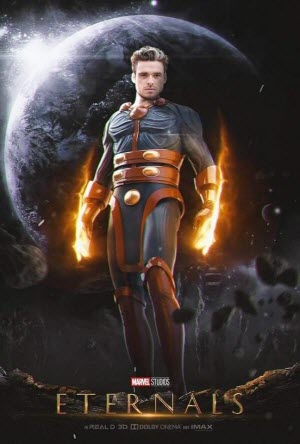 I suspect that it was a surprise to more people than me that the MCU team decided to make use of the Eternals, but they do have a track record of making unusual choices and making them work. This one has got a very mixed reception on Twitter, and I can see why, but I think this new direction for the MCU has promise.
I suspect that it was a surprise to more people than me that the MCU team decided to make use of the Eternals, but they do have a track record of making unusual choices and making them work. This one has got a very mixed reception on Twitter, and I can see why, but I think this new direction for the MCU has promise.
The first thing to note is that I watched Eternals on the same day that the Hunga volcano erupted. Anyone who has watched the movie will know why that made the experience somewhat weird. Having watched many documentaries about Pompeii, I have to say that the sequences in the movie during the eruption were horribly unrealistic, but it is a comic book movie so I guess we should cut it a little slack.
The film also had a bunch of flash-back sequences in ancient Mesopotamia. That too was mostly terrible, though not as terrible as a Ray Harryhausen film. On the other hand, they did make Babylon look beautiful in full colour. The whole city was painted blue and gold to match the Ishtar Gate, which made me very happy.
There were no hanging gardens in Babylon. How many times do I have to remind people?
The representation of Tenochtitlan is even worse, and of course the whole Eternals concept comes from the deeply offensive “brown people couldn’t have invented civilisation on their own” trope from the “Ancient Aliens” crowd. However, the Marvel universe is so chock full of god-like super-power aliens (Asgard, anyone?) that it is hard to avoid putting them in.
But who are the Eternals anyway? They are a group of near-immortal super-powered beings created long ago by god-like creatures called Celestials to guard the universe against evil creatures called Deviants. A group of Eternals was sent to Earth millennia ago and they have given rise to various myths. They were created by Jack Kirby in 1976 when his stock was very high and he could do pretty much what he wanted. Integrating them into the rest of the Marvel universe has been problematic.
To start with, standard Marvel cosmology has it that the gods of both Asgard and Olympus are real people from alien worlds. Bringing in a group of people who are supposedly the truth behind the myths of mankind immediately upsets this. Then there’s the fact that Marvel already had a group of super-powered beings based on Greek goods, the Titans, of whom our old friend Thanos is one. The Titans, who live on Titan, were created by Jim Starlin and Mike Friedrich in 1973, and were later retconned to be a group of Eternals.
I’m assuming that Kevin Feige and his team wanted to try to make sense of this mess. Certainly they have taken a lot of liberties. Ajak, Makkari and Sprite have all been gender-flipped. Kingo is now Indian rather than Japanese. Sersi’s relationship is now with Ikaris rather than Makkari. Phastos is brand new, Black and gay. Only Thena seems relatively untouched. Neil Gaiman had a short run on an Eternals comic in 2006 (a 7-issue mini-series) and some ideas from this appear to have been used in the film, particularly those involving Sprite.
However, possibly the biggest change (and this is something of a spoiler, sorry) is that the Eternals are no longer natural beings. They are androids. This explains why, of all the various species in the galaxy, the Celestials create them to look like humans. Obviously they can be made to look like any type of creatures, and for Earth they were made to look human. It has other implications too, of which more later. And it makes very little sense when you remember that Thanos is an Eternal.
The basic plot of the film is about how the group of Eternals based on Earth discover the truth of their mission and have to decide what to do about it. At the start of the film we are encouraged to see the Eternals as superheroes, but by the end it is clear that they are not. They are soldiers, created and employed by the Celestials to carry out missions. Eternals is a film about colonisation, presented from the point of view of members of the colonising army who come to understand their true purpose.
As such, Eternals differs significantly from other superhero movies. The closest thing to it is Captain America: Civil War, where the Avengers fall out over the Sokovia Accords and start to fight each other. In Eternals the stakes are much higher.
Something else that Eternals tries to do is bring diversity to the MCU. In additional to Black and Indian characters, Sersi is Asian, Makkari is also Black and is played as deaf by a deaf actor. Phastos is gay. Gilgamesh, for some inexplicable reason, is also Asian. Ajak is Latina. Druig is Irish and Ikaris Scottish. Sprite and Thena are the only white American characters on the team.
The problem with this is, as we saw with Sense-8, Hollywood isn’t aways very good at doing representation. The stereotypes tend to bleed through. I don’t’ know what folks in India made of Kingo, who is portrayed as a Bollywood star, complete with a comedy valet whose job it is to film everything he does. Harish Patel is brilliant in the role of Karun the valet, but it did make me uncomfortable.
Eternals tries very hard to do interesting things. It is probably a bit long, and that’s in part due to how much has to get explained. It is also at its weakest when portraying the conflicts between the cast. Angelina Jolie is absolutely brilliant when doing Thena as Goddess of War, but looks a bit lost the rest of the time.
As we have come to expect, the MCU team has done a good job of integrating the film into the MCU project. They’ve also been a bit tongue in cheek at times. It turns out that The Blip and the Infinity War are crucial to the plot, even though none of the Eternals in the story know that Thanos is one of them. Sersi’s human boyfriend asks her if she is a wizard like Doctor Strange. And Phastos’s son thinks that Ikaris is Superman because he can fly and has laser vision.
What we should never forget about MCU material, however, is that it is all part of an unfolding plan. In many ways the most interesting things about Eternals are the things it teases. At the end of the film the team splits up. One group remains on Earth, while the others head off to look for more of their kind.
Remember that Thanos (or more properly Thanatos if you are stickler for correct Greek) is an Eternal? Well obviously he has a brother called Eros. Who, it turns out, is played by Harry Styles. This should be a lot of fun. (And hopefully Styles will bring some of his own gender and sexuality to the role.)
Also, remember that I mentioned that Sersi has a human boyfriend? Well, he’s played by Kit Harrington, and that should immediately give you a clue that he has a bigger role ahead of him. His name is Dane Whitman. If you have spent any time reading Marvel comics then you will know exactly who he is and, like me, you will be Very Excited to see him again. Flying horse and all.
What I don’t think the Eternals need is to be put in a massive, 3-cornered super team fight along with the Avengers and X-Men. But Marvel has managed to make ridiculous ideas work before so maybe Judgement Day won’t be quite that bad.
Oh, one more thing. Characters die in this film. It may look like some of them are Really, Most Sincerely Dead. However, remember that the Eternals are androids made by the Celestials. They can easily make copies. Which is just as well, because one of those who dies is way too good to waste.


 This is the April 2022 issue of Salon Futura. Here are the contents.
This is the April 2022 issue of Salon Futura. Here are the contents. A Psalm for the Wild-Built
A Psalm for the Wild-Built Bluebird
Bluebird StarHenge
StarHenge Midnight Doorways
Midnight Doorways The White Room
The White Room Rosebud
Rosebud Eastercon 2022
Eastercon 2022 Spiderman – No Way Home
Spiderman – No Way Home Story Matrices
Story Matrices Star Trek: Discovery – Season 4
Star Trek: Discovery – Season 4 Editorial – April 2022
Editorial – April 2022 This issue’s cover uses a piece of art that Liam Sharp has been using to promote his StarHenge comic. It shows a Mor-Dreadnaught of The Cast, who are the villains of the story. I cheekily asked Liam if he’d mind me using it, and he said yes. Huge thanks are appropriate. An undulterated version of the art is available below.
This issue’s cover uses a piece of art that Liam Sharp has been using to promote his StarHenge comic. It shows a Mor-Dreadnaught of The Cast, who are the villains of the story. I cheekily asked Liam if he’d mind me using it, and he said yes. Huge thanks are appropriate. An undulterated version of the art is available below.
 It is Hugo reading time, and that means catching up with Becky Chambers. It is easy to see why she is so popular. Her prose is effortlessly readable and deeply caring. But this can mask the amount of thought that she puts into her work.
It is Hugo reading time, and that means catching up with Becky Chambers. It is easy to see why she is so popular. Her prose is effortlessly readable and deeply caring. But this can mask the amount of thought that she puts into her work.
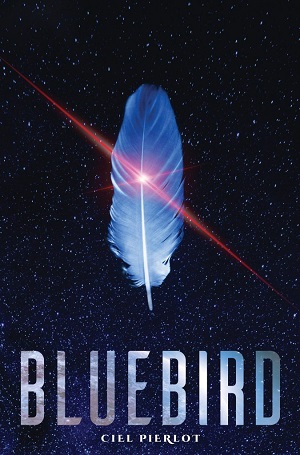 Did someone say, “lesbian space pirate”? I’m in.
Did someone say, “lesbian space pirate”? I’m in.
 Sometimes in this business you meet someone and can see immediately that they have huge amounts of talent and are going to do very well for themselves. In my case one such person was Liam Sharp. I could see that he had a fine career as an artist in front of him, and I was right. He’s currently having a bumper year. He’s had a hugely successful Kickstarter campaign for an art book, and now he is starting that holy grail of all comics people, a creator-owned title.
Sometimes in this business you meet someone and can see immediately that they have huge amounts of talent and are going to do very well for themselves. In my case one such person was Liam Sharp. I could see that he had a fine career as an artist in front of him, and I was right. He’s currently having a bumper year. He’s had a hugely successful Kickstarter campaign for an art book, and now he is starting that holy grail of all comics people, a creator-owned title. While the level of diversity in mainstream publishing has improved quite a bit of late, it is still hard for writers of colour who do not live in the Anglosphere to get their work considered. Often what they have to do is publish locally and hope that their book gets some attention, and is then picked up by a bigger publisher. Examples of this are Samit Basu’s Chosen Spirits, which will be re-published as The City Inside by Tot.com in June, and Lavanya Lakshminarayan’s Analog/Virtual, which will be republished as The Ten Percent Thief by Solaris next year. I am hoping that something similar will happen with Usman T Malik’s Midnight Doorways.
While the level of diversity in mainstream publishing has improved quite a bit of late, it is still hard for writers of colour who do not live in the Anglosphere to get their work considered. Often what they have to do is publish locally and hope that their book gets some attention, and is then picked up by a bigger publisher. Examples of this are Samit Basu’s Chosen Spirits, which will be re-published as The City Inside by Tot.com in June, and Lavanya Lakshminarayan’s Analog/Virtual, which will be republished as The Ten Percent Thief by Solaris next year. I am hoping that something similar will happen with Usman T Malik’s Midnight Doorways.
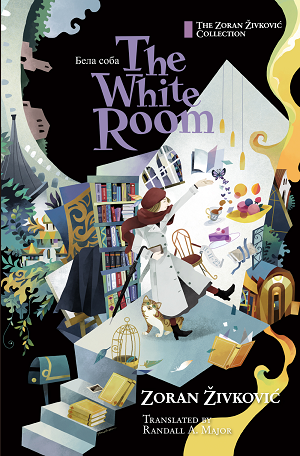 If you want to know the things we see
If you want to know the things we see
 This is another book that I can’t give a proper review of, because I did a brief bit of consultancy work on it. My name is right there in the acknowledgements. But I did love the book when I first read it, and consequently want to tell you about it.
This is another book that I can’t give a proper review of, because I did a brief bit of consultancy work on it. My name is right there in the acknowledgements. But I did love the book when I first read it, and consequently want to tell you about it.
 As experiments go, this was one part encouraging and one part rather scary. Let’s start with the good stuff.
As experiments go, this was one part encouraging and one part rather scary. Let’s start with the good stuff. Well that wasn’t as bad as I expected. I’d been all primed to absolutely hate this movie. Into the SpiderVerse is by far my favourite Spiderman movie, and I had heard that No Way Home steals much of the plot of that. To a certain extent it does, and of course it does it badly because all of the spiderpeople it brings in from across the multiverse are Peter Parker, which is very boring in comparison. However, there’s a reason why the new film is the way it is.
Well that wasn’t as bad as I expected. I’d been all primed to absolutely hate this movie. Into the SpiderVerse is by far my favourite Spiderman movie, and I had heard that No Way Home steals much of the plot of that. To a certain extent it does, and of course it does it badly because all of the spiderpeople it brings in from across the multiverse are Peter Parker, which is very boring in comparison. However, there’s a reason why the new film is the way it is.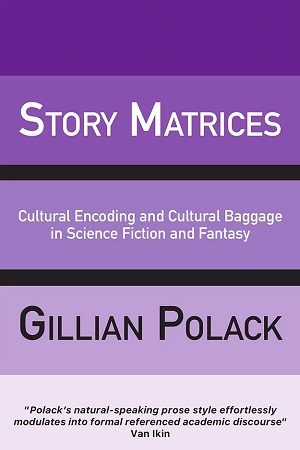 The full title of this book is Story Matrices: Cultural Encoding and Cultural Baggage in Science Fiction and Fantasy, because it is an academic work and therefore must have a colon somewhere. However, don’t let that put you off, because Gillian Polack tries hard to make her work accessible, and the book is published by Luna Press so it does not cost three years’ wages to buy.
The full title of this book is Story Matrices: Cultural Encoding and Cultural Baggage in Science Fiction and Fantasy, because it is an academic work and therefore must have a colon somewhere. However, don’t let that put you off, because Gillian Polack tries hard to make her work accessible, and the book is published by Luna Press so it does not cost three years’ wages to buy.
 Season 4 of Star Trek: Discovery had a difficult time in the UK. First it was announced as streaming on Netflix. Then it was pulled the day before the first episode was due to drop. We were told we’d have to wait months for it to be available on Paramount +. There was a huge outcry, and mysteriously the series appeared on a live streaming TV platform called Pluto which I’d never heard of before.
Season 4 of Star Trek: Discovery had a difficult time in the UK. First it was announced as streaming on Netflix. Then it was pulled the day before the first episode was due to drop. We were told we’d have to wait months for it to be available on Paramount +. There was a huge outcry, and mysteriously the series appeared on a live streaming TV platform called Pluto which I’d never heard of before.
 This is the March 2022 issue of Salon Futura. Here are the contents.
This is the March 2022 issue of Salon Futura. Here are the contents. Age of Ash
Age of Ash Dune
Dune These Lifeless Things
These Lifeless Things Dear Letter Writers…
Dear Letter Writers… Bones and Stars
Bones and Stars The Cuckoo Cage
The Cuckoo Cage Alia Terra
Alia Terra Lower Decks – Season 2
Lower Decks – Season 2 Prime Deceptions
Prime Deceptions This issue’s cover is based on Ben Baldwin’s art for the new Chaz Brenchey novel, The Devil in the Dust. This is the first part of the re-issue of the legendary Outremer series. Links to pre-orders are available
This issue’s cover is based on Ben Baldwin’s art for the new Chaz Brenchey novel, The Devil in the Dust. This is the first part of the re-issue of the legendary Outremer series. Links to pre-orders are available 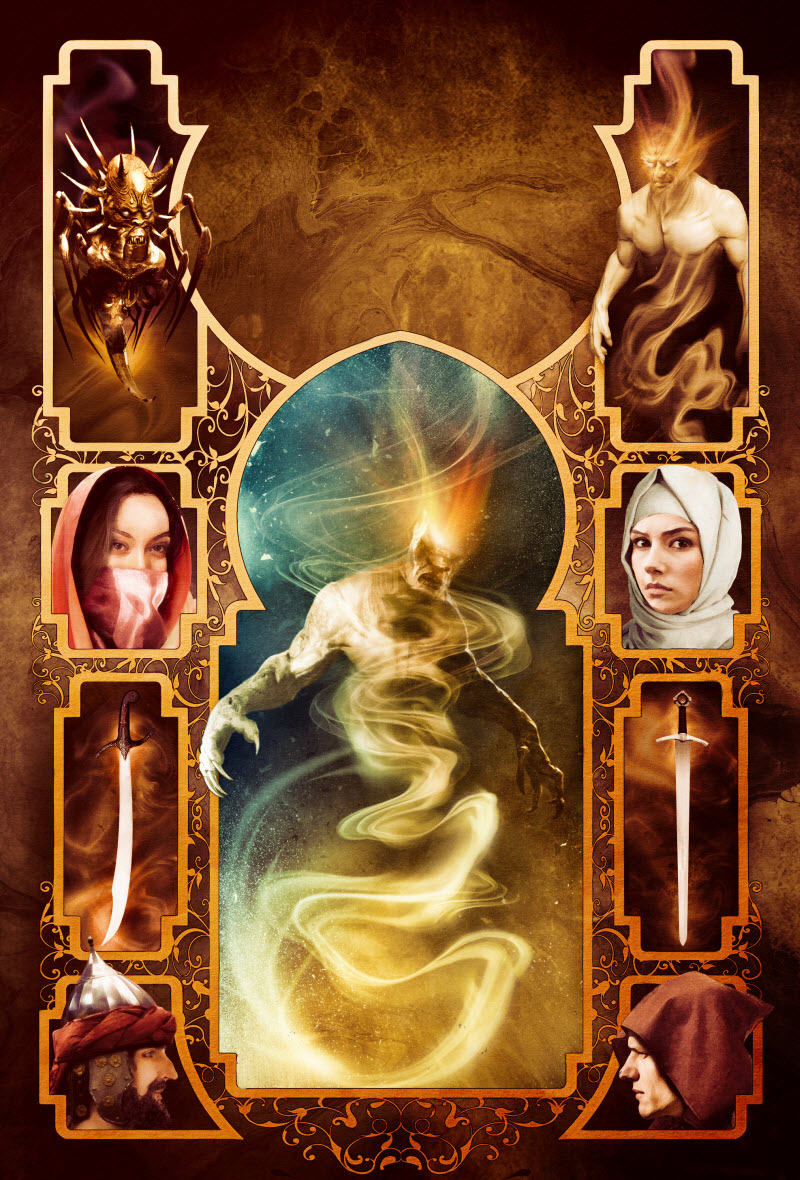
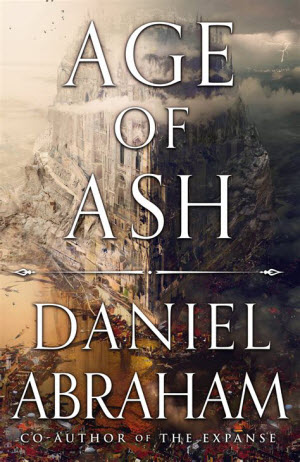 If you were to ask people who their favourite writer of epic fantasy was, the chances are that they would not mention Daniel Abraham. If people know his name at all they probably do so because he is one half of the writing team known as James S A Corey, and therefore is part-responsible for The Expanse, which is a very fine piece of science fiction. However, he is also responsible for The Long Price Quartet, which I fangirled over shamelessly back in Emerald City days, and which I still believe is one of the finest epic fantasies ever produced. I managed to space on the Dagger and Coin series because I was not in a good place for reading long books when it came out, but Abraham is now back with the Kithamar Trilogy, starting with Age of Ash.
If you were to ask people who their favourite writer of epic fantasy was, the chances are that they would not mention Daniel Abraham. If people know his name at all they probably do so because he is one half of the writing team known as James S A Corey, and therefore is part-responsible for The Expanse, which is a very fine piece of science fiction. However, he is also responsible for The Long Price Quartet, which I fangirled over shamelessly back in Emerald City days, and which I still believe is one of the finest epic fantasies ever produced. I managed to space on the Dagger and Coin series because I was not in a good place for reading long books when it came out, but Abraham is now back with the Kithamar Trilogy, starting with Age of Ash.
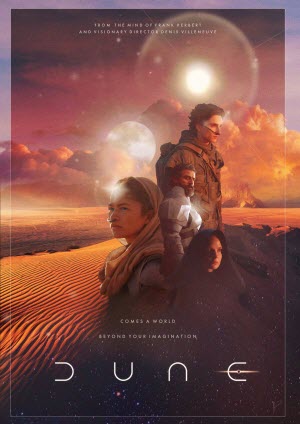 Now that was a movie. I do wish that I had been able to see it on a big screen as it deserves. Maybe someone (hello Glasgow Worldcon) will consider screening both parts back-to-back. Assuming Part Two lives up to the promise of Part One, of course.
Now that was a movie. I do wish that I had been able to see it on a big screen as it deserves. Maybe someone (hello Glasgow Worldcon) will consider screening both parts back-to-back. Assuming Part Two lives up to the promise of Part One, of course.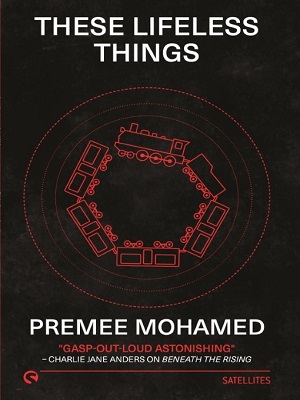 I owe this one to the good folks at the Hugo Book Club. They were recommending novellas that people might nominate. This one sounded interesting, and it was.
I owe this one to the good folks at the Hugo Book Club. They were recommending novellas that people might nominate. This one sounded interesting, and it was.
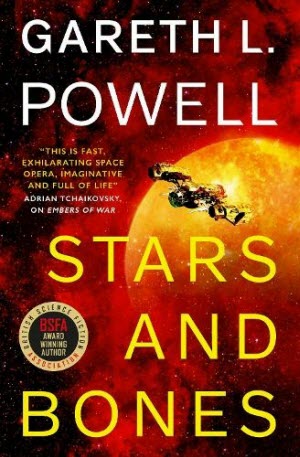 A new Gareth Powell novel is always a matter of interest in these here parts. Stars and Bones reads like a stand-alone, so it may be a good point for those of you who haven’t tried Gareth’s work before to dip in and find out what he’s about.
A new Gareth Powell novel is always a matter of interest in these here parts. Stars and Bones reads like a stand-alone, so it may be a good point for those of you who haven’t tried Gareth’s work before to dip in and find out what he’s about.
 Those of you with a fondness for interesting short fiction will doubtless already know of Comma Press. They have published two collections by M John Harrison. They have also done three anthologies of translated SF, one by Palestinian authors, one by Iraqis, and one by Kurds. I think the way they first came to my attention was with a book called When It Changed. Edited by Geoff Ryman, this pulled together a number of top-class science fiction writers paired with bleeding edge scientists. The idea was for the scientists to provide ideas for the writers to explore.
Those of you with a fondness for interesting short fiction will doubtless already know of Comma Press. They have published two collections by M John Harrison. They have also done three anthologies of translated SF, one by Palestinian authors, one by Iraqis, and one by Kurds. I think the way they first came to my attention was with a book called When It Changed. Edited by Geoff Ryman, this pulled together a number of top-class science fiction writers paired with bleeding edge scientists. The idea was for the scientists to provide ideas for the writers to explore.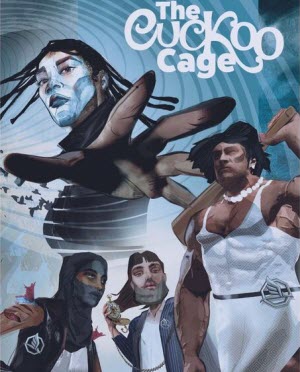
 This is a book that I did a small sensitivity reading job on, so I can’t do much in the way of a review, but I want to mention the book because what Atthis Arts are doing with it is very interesting.
This is a book that I did a small sensitivity reading job on, so I can’t do much in the way of a review, but I want to mention the book because what Atthis Arts are doing with it is very interesting.
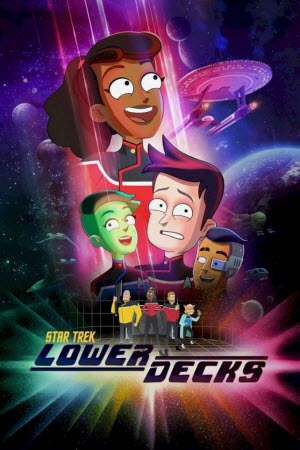 There is a lot of Star Trek on TV right now, and Lower Decks continues to be among the best of it.
There is a lot of Star Trek on TV right now, and Lower Decks continues to be among the best of it.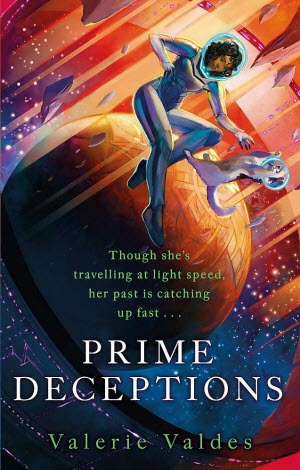 This is the second volume in Valerie Valdes’s series about Captain Eva Innocente and her crew of semi-illegal misfits. Much of it is very much the same fare as book 1. Indeed, the main plot is remarkably similar, only it is another one of the crew’s siblings that needs rescuing. How things work around that is rather different.
This is the second volume in Valerie Valdes’s series about Captain Eva Innocente and her crew of semi-illegal misfits. Much of it is very much the same fare as book 1. Indeed, the main plot is remarkably similar, only it is another one of the crew’s siblings that needs rescuing. How things work around that is rather different.

 Season 2 of The Witcher was much more of a conventional story arc. Personally I didn’t have any difficulty with the multiple timelines of season 1, but then again I have read an awful lot of speculative fiction. It was disorienting in Iain Banks’ Use of Weapons, now it is just normal.
Season 2 of The Witcher was much more of a conventional story arc. Personally I didn’t have any difficulty with the multiple timelines of season 1, but then again I have read an awful lot of speculative fiction. It was disorienting in Iain Banks’ Use of Weapons, now it is just normal.
 This is the January 2022 issue of Salon Futura. Here are the contents.
This is the January 2022 issue of Salon Futura. Here are the contents. She Who Became the Sun
She Who Became the Sun Cyber Mage
Cyber Mage The Faerie Queene
The Faerie Queene Elder Race
Elder Race Servant Mage
Servant Mage Eternals
Eternals The Witcher – Season 1
The Witcher – Season 1
 It has taken me a while to get to this book, which has been widely praised elsewhere. I’m very pleased I read it, though not for the reasons I expected.
It has taken me a while to get to this book, which has been widely praised elsewhere. I’m very pleased I read it, though not for the reasons I expected.
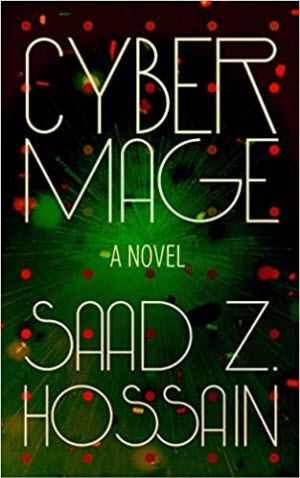 I loved Saad Z. Hossain’s novella, The Ghurkha and the Lord of Tuesday, and was naturally keen to see what he could do with a longer form. I’m pleased to say that Cyber Mage did not disappoint.
I loved Saad Z. Hossain’s novella, The Ghurkha and the Lord of Tuesday, and was naturally keen to see what he could do with a longer form. I’m pleased to say that Cyber Mage did not disappoint.
 I should start by noting that this is by no means a full review. The Faerie Queene, by Edmund Spenser, is an epic poem written in Elizabethan English. It is one of the most studied works in the English language. Someone has probably written a book about the books that have been written about it. I couldn’t do a proper review without taking in at least some of the scholarship that has been produced about it over the intervening 400+ years since it was written.
I should start by noting that this is by no means a full review. The Faerie Queene, by Edmund Spenser, is an epic poem written in Elizabethan English. It is one of the most studied works in the English language. Someone has probably written a book about the books that have been written about it. I couldn’t do a proper review without taking in at least some of the scholarship that has been produced about it over the intervening 400+ years since it was written.
 While I’m waiting for the sequel to Shards of Earth, I figured that I should catch up on what else Adrian Tchaikovsky is up to. Elder Race is a novella from Tor.com. It is edited by Lee Harris, which I mention because he placed 7th in nominations for both Editor Hugos last year and y’all need to get to and vote for him this year. The title suggests something from Lovecraft or Warhammer, but the story is anything but.
While I’m waiting for the sequel to Shards of Earth, I figured that I should catch up on what else Adrian Tchaikovsky is up to. Elder Race is a novella from Tor.com. It is edited by Lee Harris, which I mention because he placed 7th in nominations for both Editor Hugos last year and y’all need to get to and vote for him this year. The title suggests something from Lovecraft or Warhammer, but the story is anything but.
 Why yes, this is another Tor.com novella, also edited by Lee Harris. This one is a 2022 release though, so it doesn’t count towards Lee’s Hugo eligibility.
Why yes, this is another Tor.com novella, also edited by Lee Harris. This one is a 2022 release though, so it doesn’t count towards Lee’s Hugo eligibility.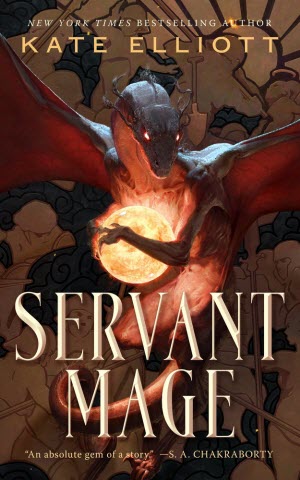
 I suspect that it was a surprise to more people than me that the MCU team decided to make use of the Eternals, but they do have a track record of making unusual choices and making them work. This one has got a very mixed reception on Twitter, and I can see why, but I think this new direction for the MCU has promise.
I suspect that it was a surprise to more people than me that the MCU team decided to make use of the Eternals, but they do have a track record of making unusual choices and making them work. This one has got a very mixed reception on Twitter, and I can see why, but I think this new direction for the MCU has promise.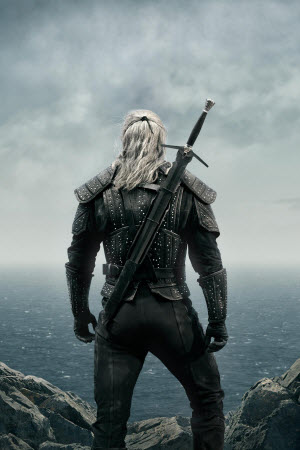 Yes, yes, I know, I am way behind. Too much good TV. But I’m catching up, at least on this one.
Yes, yes, I know, I am way behind. Too much good TV. But I’m catching up, at least on this one.
 This is the December 2021 issue of Salon Futura. Here are the contents.
This is the December 2021 issue of Salon Futura. Here are the contents. Beyond the Hallowed Sky
Beyond the Hallowed Sky Worldcon 79 – DisCon3
Worldcon 79 – DisCon3 The Anthropocene Unconscious
The Anthropocene Unconscious The Green Knight
The Green Knight Supergirl – Season 7
Supergirl – Season 7 The Memory Theater
The Memory Theater Hawkeye
Hawkeye The Necropolis Empire
The Necropolis Empire Titans – Season 3
Titans – Season 3
 As most of you will know, there is a bid to bring Worldcon back to Glasgow in 2024. What better way to promote that, than have one of Scotland’s finest writers of science fiction launch a new trilogy that is centred on the building of a faster-than-light craft in a Clyde shipyard? This version of Spaceport Glasgow might not be as chrome-covered and busy as the painting that Jim Burns produced for us in 2005, but it is even more evocative of the setting.
As most of you will know, there is a bid to bring Worldcon back to Glasgow in 2024. What better way to promote that, than have one of Scotland’s finest writers of science fiction launch a new trilogy that is centred on the building of a faster-than-light craft in a Clyde shipyard? This version of Spaceport Glasgow might not be as chrome-covered and busy as the painting that Jim Burns produced for us in 2005, but it is even more evocative of the setting.